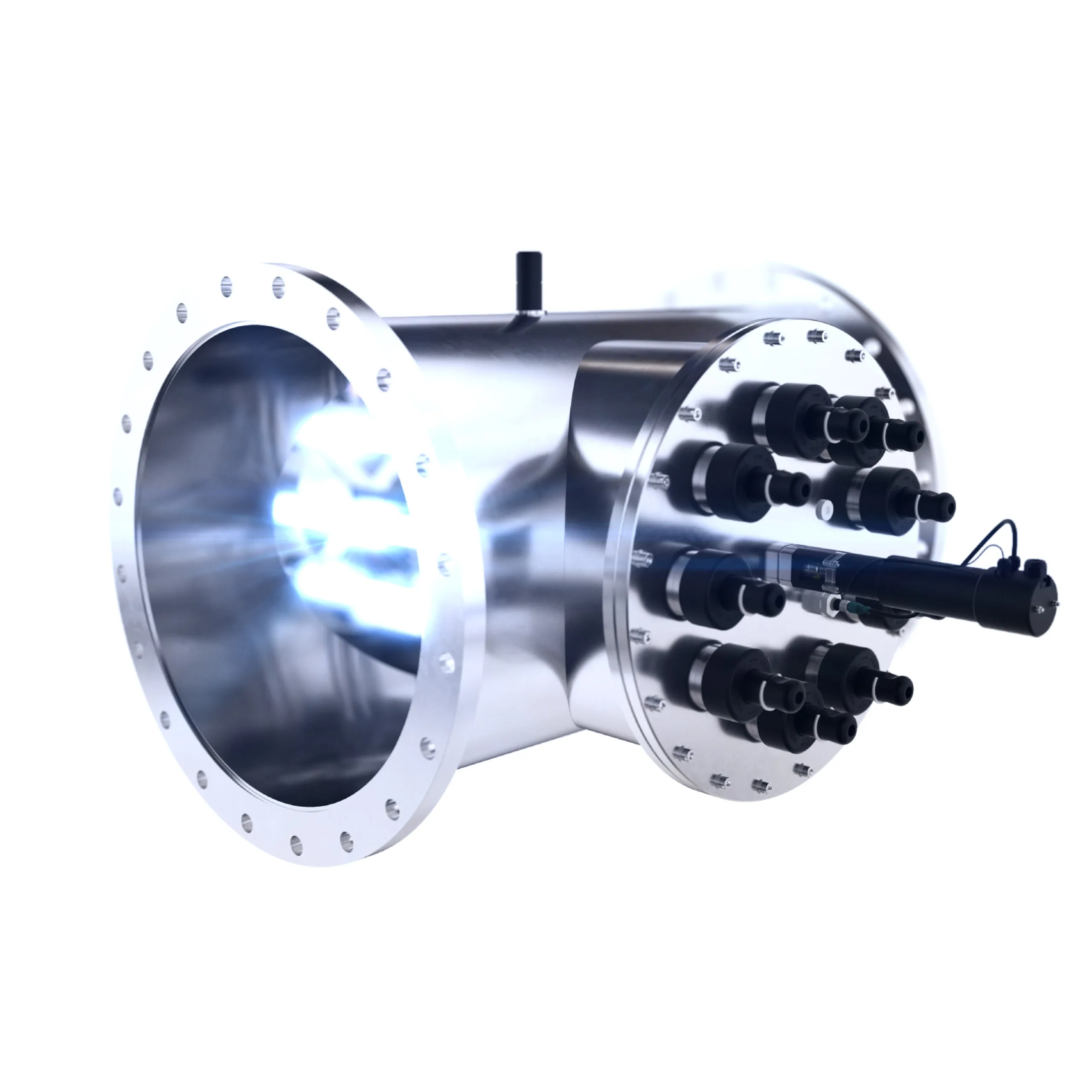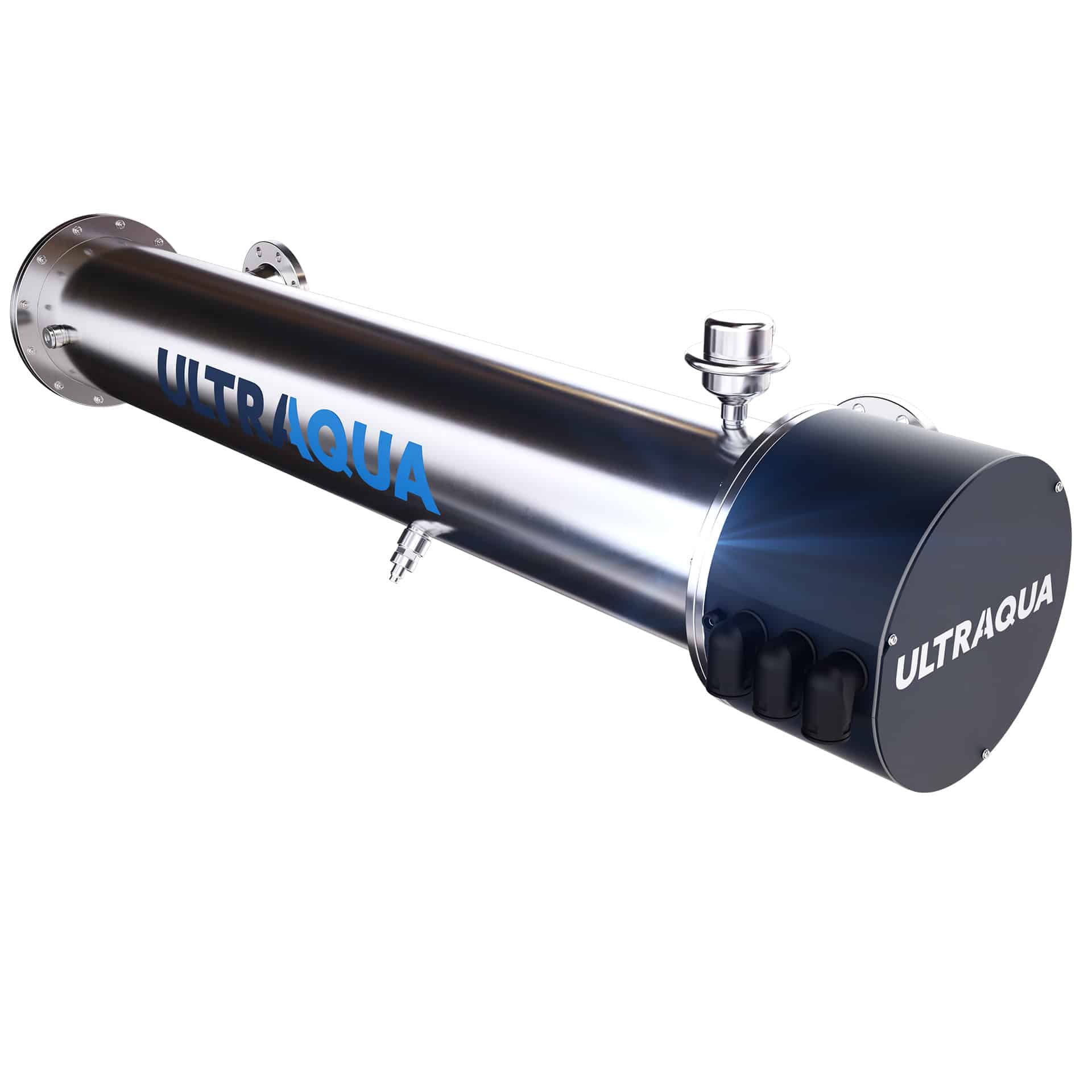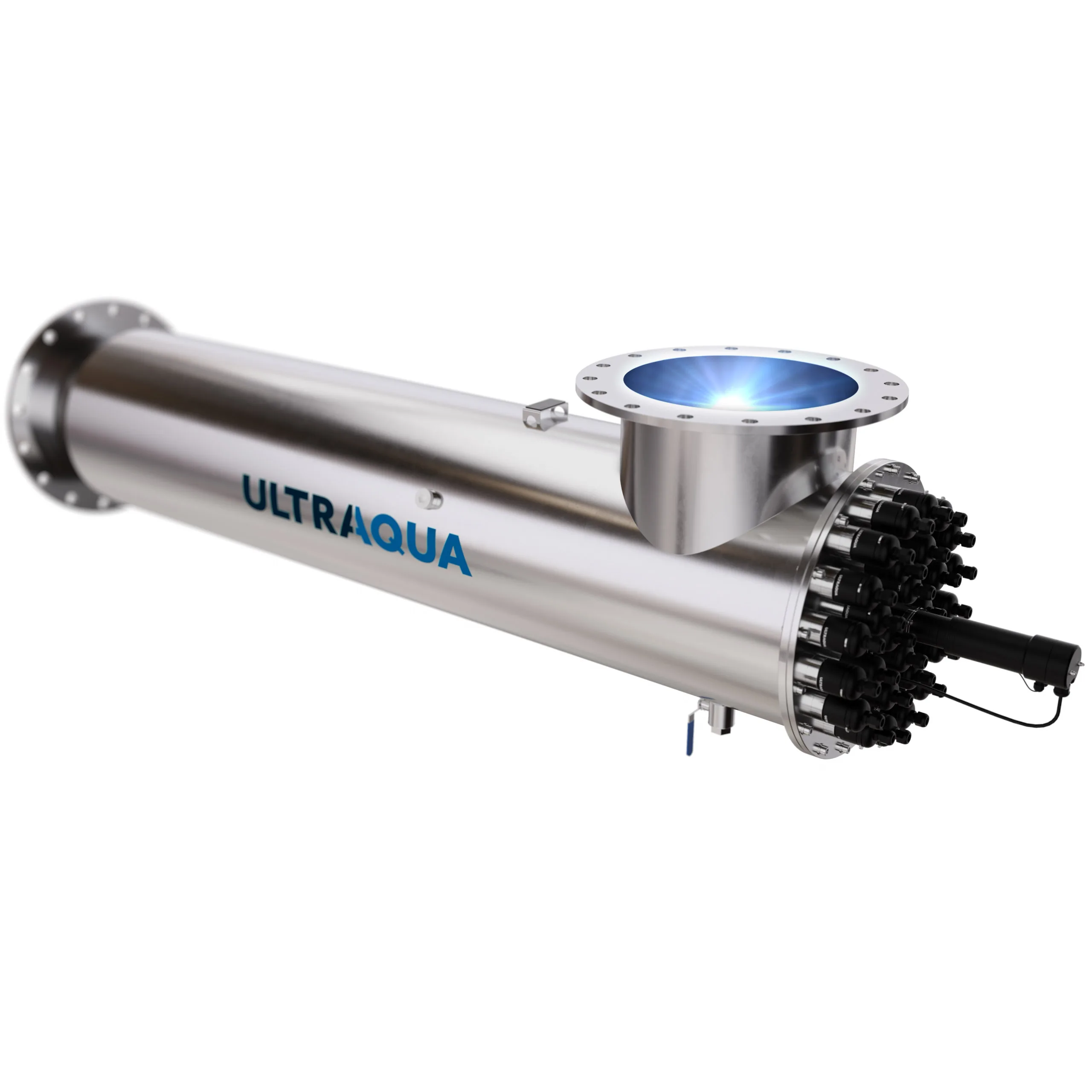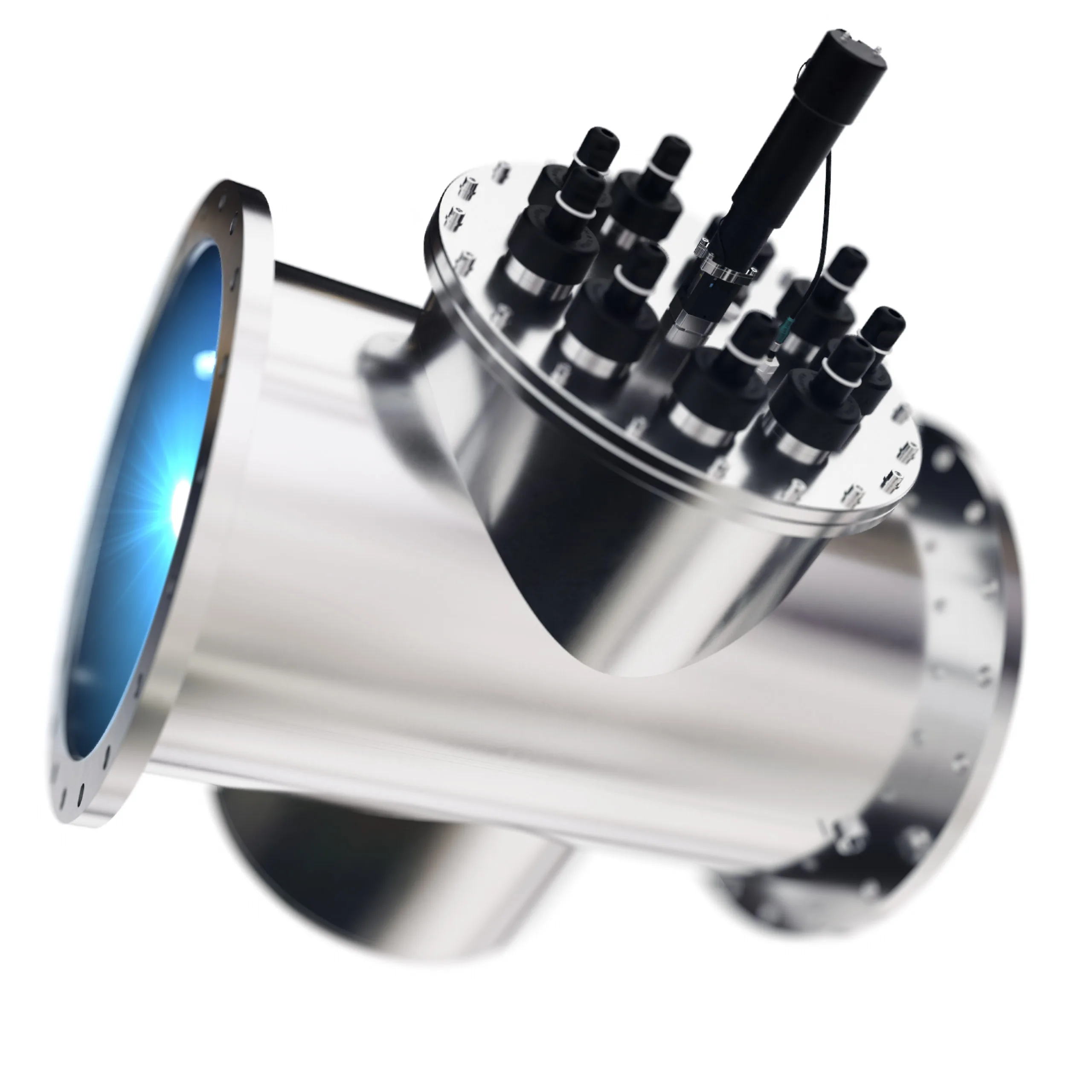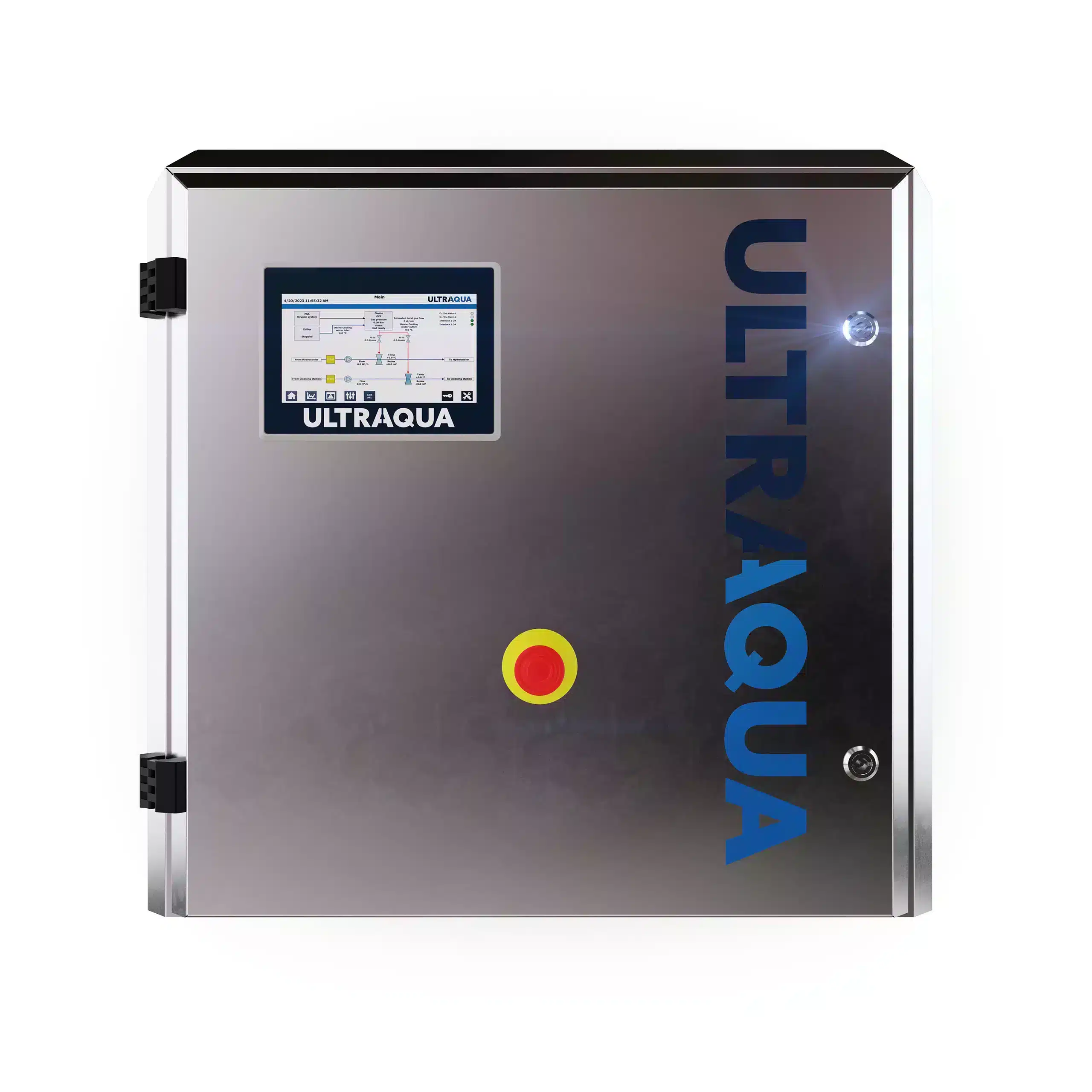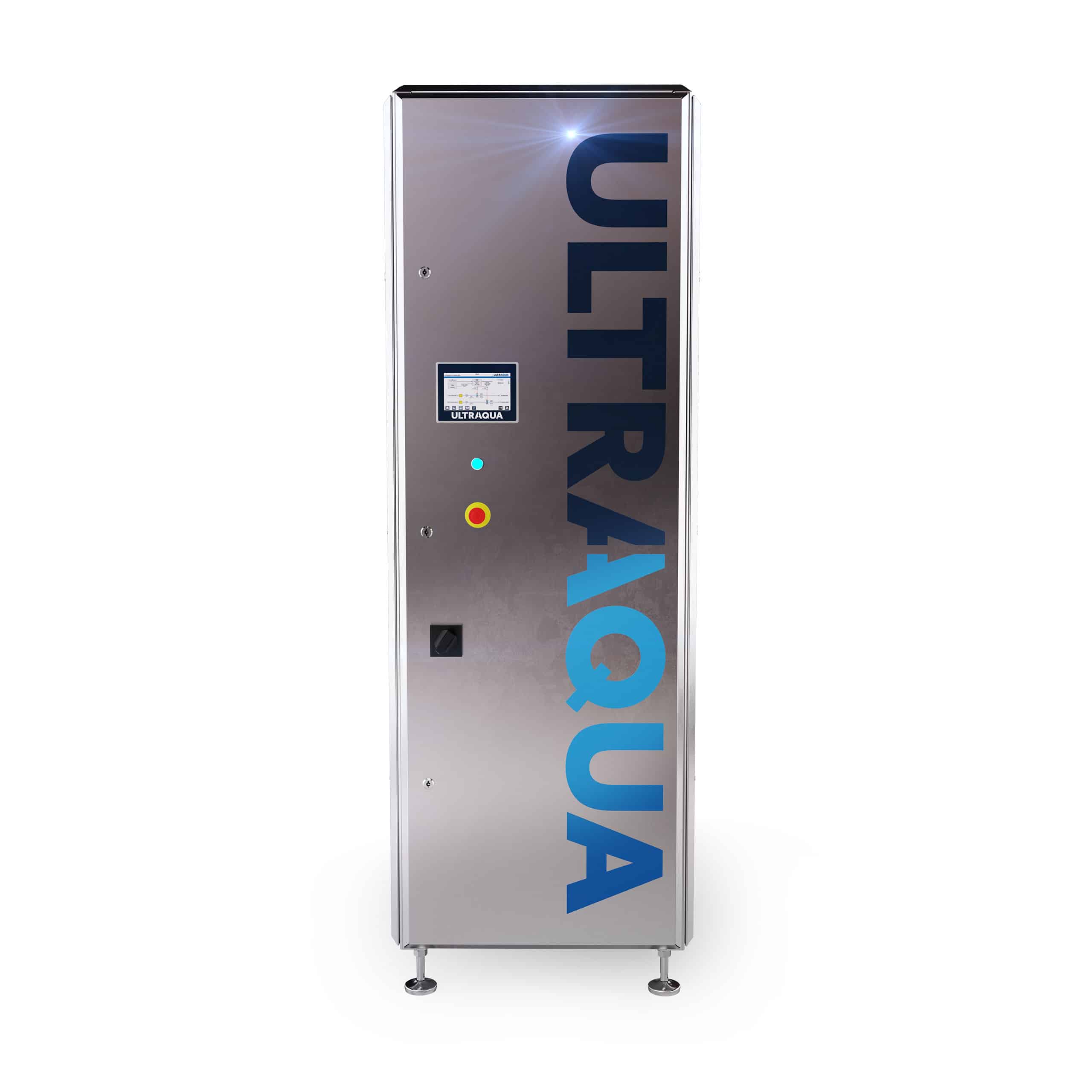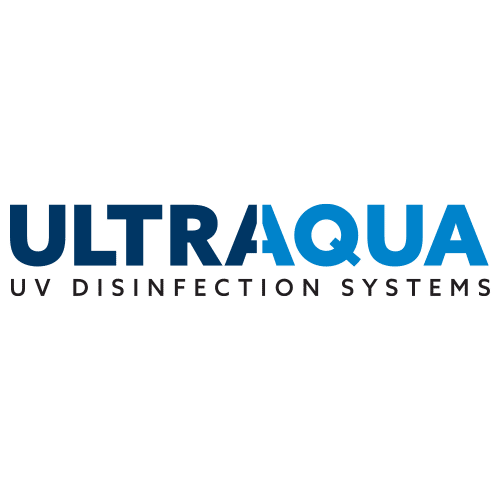UV DISINFECTION FOR COOLING TOWER WATER
Cooling towers used for water heat rejection after the industrial process has over the years proved to be a convenient place for bacteria and pathogens to multiply. The warm, humid environment, constant aerosol, air, and water intake from outside all contribute to the formation and build-up of bacteria and viruses. Especially if the air around the cooling tower is dusty or humid. Using chemicals somewhat helped to address the issue, but soon proved too detrimental as it resulted in high levels of corrosion, resilience over time, and many by-product formations.
The issue is worsened as biological water and the air intake mix with the chemicals, leading to a never-ending circle of additional chemicals to eliminate the by-product of the previously used ones. Since the cooling of water is achieved through water evaporation, the dissolved solids concentration in the cooled water will significantly increase, calling for necessary disinfection. UV and AOP disinfection methods are the most optimal solutions available for this treatment since it does not involve chemicals, create any resistance or any form of corrosive by-products.
UV systems are the most cost-efficient solution available for cooling tower water due to the complexity of the operational environment, being effective against all known bacteria and viruses. Additionally, UV offers operation advantages since it is not labor-intensive and has a relatively small footprint.
ULTRAAQUA UV standard disinfection and AOP systems deliver this and much more. Equipped with the ULTRAWIPER™ wiping system for the quartz sleeve, eliminates the need for manual wiping. The ULTRAAQUA UV AOP system offers an additional advantage as oxidizing radicals also eliminates the contamination across piping. Both UV systems can be installed at the buffer tank inlet point or inside it.
FREQUENTLY ASKED QUESTIONS (FAQ)
Find frequently asked questions regarding UV disinfection for this application by clicking on a question below.
How does UV disinfection benefit cooling tower water systems?
UV disinfection in cooling tower water systems effectively controls the growth of harmful microorganisms, including Legionella, which can cause health hazards. It ensures that the water circulating within the system is clean, reducing the risk of biofilm formation and system inefficiencies.
Can UV treatment reduce the use of chemicals in cooling tower maintenance?
By controlling microbial growth, UV minimizes the need for biocides and other chemical treatments, leading to a more environmentally friendly operation. This makes UV systems capable of significantly reducing the reliance on chemicals for water treatment in this application.
Is UV disinfection cost-effective for cooling tower operations?
UV disinfection assists in improving cost-efficiency as it reduces the costs associated with chemical treatments and helps prevent costly maintenance issues related to biofouling and corrosion.
How does UV treatment impact the overall efficiency of cooling towers?
UV treatment improves the overall efficiency of cooling towers by maintaining cleaner water, which enhances heat exchange efficiency and reduces the likelihood of system downtime due to microbial-related issues.
